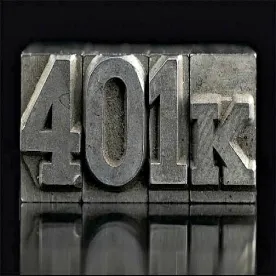In Announcement 2020-7, the Internal Revenue Service (IRS) announced employers’ deadline by which to adopt new plan documents related to Notice 2017-37. The new announcement informs employers that maintain defined contribution plans (e.g., 401(k) plans, profit-sharing plans, and money purchase plans) through the adoption of IRS pre-approved plan documents that they have until July 31, 2022, to adopt the new pre-approved plan documents restated as a result of the changes to the Notice 2017-37 requirements regarding retirement plan qualification, generally known as the 2017 Cumulative List.
Background
Providers of pre-approved defined contribution plan documents, such as banks, insurance companies, law firms, and recordkeepers, had until December 31, 2018, to restate their plan documents for the 2017 Cumulative List changes and to file the documents with the IRS to apply for an opinion letter confirming that, as restated, the documents continued to meet the retirement plan qualification provisions of the Internal Revenue Code.
In the summer of 2020, the IRS published a list of all pre-approved plans for which it had received applications for opinion letters regarding the adoption of the 2017 Cumulative List changes. Shortly thereafter, the IRS mailed the corresponding favorable opinion letters to the providers.
Now adopting employers must formally adopt the providers’ restated pre-approved plan documents as official plan documents for their respective defined contribution plans no later than July 31, 2022. Failure to do so could result in a plan’s disqualification.
Adopting employers may want to coordinate with their plan providers to ensure timely review and adoption of the restated plan documents. Depending on the terms of an employer’s plan, a plan’s summary plan description may need to be updated as well.
2017 Cumulative List Changes
Among other matters, the 2017 Cumulative List covers:
-
certain mid-year changes to safe harbor 401(k) plans and safe harbor notices, such as mid-year reductions or suspensions of safe harbor matching contributions (see Notice 2016-16);
-
changes to the definition of a participant’s “spouse” to include same-sex spouses and certain discretionary plan amendments providing new rights or benefits with respect to participants with same-sex spouses in order to make up for benefits or benefits options that had not previously been available to those participants (see Notice 2015-86);
-
extended participant eligibility for in-plan Roth rollovers (see Notice 2013-74) and rollovers to Savings Incentive Match Plan for Employees Individual Retirement Accounts (SIMPLE IRAs) (see Section 408(p)(1)(B) of the Internal Revenue Code of 1986);
-
the requirement that amounts used to fund qualified matching contributions (QMACs) and qualified nonelective contributions (QNECs) be nonforfeitable and meet “distribution requirements at the time they are allocated to [plan] participants’ accounts,” rather than when they are first contributed to the plan (see 82 Fed. Reg. 5477, January 18, 2017);
-
special nondiscrimination rules for qualified defined contributions plan that “provide lifetime income by offering, as investment options, a series of target date funds … that include deferred annuities among their assets” (see Notice 2014-66); and
-
certain modifications of the required minimum distribution rules for defined contribution plans with qualifying longevity annuity contracts (see 79 Fed. Reg. 37633, July 2, 2014).
Post-2017 Cumulative List Changes
The 2017 Cumulative List contains changes to retirement plan qualification requirements enacted prior to February 1, 2017. Therefore, the new pre-approved plans that must be adopted by employers by July 31, 2022, do not contain changes in retirement plan qualification requirements enacted on or after February 1, 2017, such as:
-
the changes to the hardship distribution rules enacted by the Bipartisan Budget Act of 2018 and finalized by the IRS on September 23, 2019 (see 84 Fed. Reg. 49651, September 23, 2019), which, generally, became effective January 1, 2020, and need to be adopted though an interim plan amendment by December 31, 2021 (see Revenue Procedure 2020-9);
-
the various changes enacted by the Setting Every Community Up for Retirement Enhancement (SECURE) Act of 2019, including the required minimum distribution rules and safe harbor 401(k) plans, which, generally, became effective January 1, 2020, and need to be adopted though an interim plan amendment by December 31, 2022; and
-
the various changes enacted by the Coronavirus Aid, Relief, and Economic Security (CARES) Act of 2020, including the disaster relief distribution and participant loan rules, which, generally, became effective March 27, 2020, and need to be adopted though an interim plan amendment by December 31, 2022.





 />i
/>i
